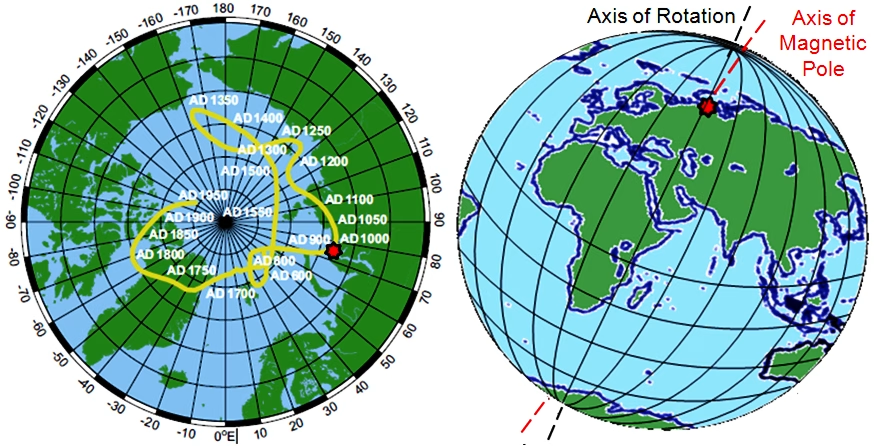It sounds like the plot of a disaster movie, but it’s actually happening right now.
Earth’s magnetic poles are drifting faster than ever recorded in history, and scientists aren’t sure why. If these shifts continue—or worse, if the poles flip entirely—it could cause chaos for technology, animals, and even your smartphone.
Yes, you read that right.
Your GPS, signal reception, flight paths, satellites—and even power grids could be at risk.
🧭 What Does It Mean That the Poles Are Shifting?
Earth’s magnetic field is created by molten iron swirling around the planet’s core. This magnetic field has two poles—North and South—that guide compasses, affect animal migration, and protect us from solar radiation.
But these poles aren’t fixed. Over centuries, they wander.
The North Magnetic Pole, for example, used to move a few kilometers a year. But since the 1990s, it’s been shifting at an alarming rate of 50–60 km per year, heading from Canada toward Siberia.
And that’s making scientists very nervous.
🌍 The Last Time Earth’s Poles Flipped…
Geological records show that Earth’s magnetic poles have flipped dozens of times in the past. The last major reversal happened about 780,000 years ago—and it took thousands of years to complete.
But during a flip, the magnetic field weakens drastically—sometimes up to 90%. That means Earth becomes vulnerable to solar flares, cosmic rays, and atmospheric erosion.
In simpler terms:
Our natural shield drops, and the planet becomes exposed.
📱 What Happens If They Flip Again?
The consequences could be massive and immediate in the modern age:
- GPS systems malfunction: Planes, ships, and smartphones could lose navigation accuracy.
- Communication blackouts: Satellite and radio signals may become unreliable or fail completely.
- Power grid disruption: Solar storms could overload and destroy electrical infrastructure.
- Increased radiation: Flights and space missions become more dangerous due to radiation exposure.
- Animal disorientation: Whales, birds, and bees that rely on magnetic fields for navigation could lose their sense of direction.
Basically, the digital world we rely on could come to a standstill.
🛰️ Is This Already Happening?
Some signs are deeply concerning:
- The South Atlantic Anomaly—a weak spot in Earth’s magnetic field—is growing and drifting.
- Satellite systems like ESA’s Swarm are detecting rapid, uneven shifts in magnetic strength across the globe.
- Geophysicists warn that Earth’s magnetic field has already weakened by about 10% in the last 150 years.
While a complete pole reversal might still be hundreds or thousands of years away, these shifts could still cause short-term disruptions in technology and climate.
🐦 Nature Might Notice Before We Do
Many animals—especially birds, whales, and sea turtles—navigate using Earth’s magnetic field.
Sudden shifts can cause:
- Mass strandings
- Misdirected migrations
- Breeding disruptions
So far, scientists have noticed increased confusion in some bird populations and an uptick in beaching incidents among marine mammals—possibly tied to magnetic interference.
🧠 Can We Do Anything About It?
We can’t stop the poles from moving—but we can prepare:
- Upgrade satellite shielding to survive geomagnetic storms
- Recalibrate GPS systems regularly
- Monitor migratory patterns to understand animal impact
- Educate the public on geo-sensitive tech disruptions
And for individuals?
Keep physical maps handy, use multiple navigation tools, and stay updated on solar activity.
⚠️ Final Thoughts
We often think Earth is stable and predictable. But under the surface, our planet is shifting—slowly but surely. The magnetic poles aren’t just invisible forces. They’re the very fabric of our navigation, communication, and climate systems.
So next time your phone acts weird or your compass spins aimlessly, it might not be a glitch.
It might be the Earth reminding us that nothing is truly fixed.



